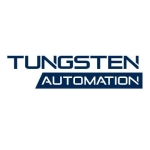What is our primary use case?
I have multiple use cases as part of this solution, since I work in different domains with different technologies and applications. We use attended and unattended bots.
One use case was for a credit-based client where we worked on the UI automation of the application. We were using UiPath Automation Cloud because our team is spread across different geographical locations, like the U.S, APAC and EMEA regions. We had different RPA developers who are developing the script simultaneously and putting it on the system, and our business case was that we wanted to automate the UI applications. Since there were different developers in different geographical regions, they created the bots on their system. Due to the cloud offering, we were able to move the bots to production using a click of a button. There is also an Orchestrator offering as part of the cloud, which is hosted. Once we had a thorough peer review of the bots being developed, we pushed it to our production-ready cloud-based Orchestrator. From there, we use it to run the script. That is an unattended bot, which is also one of the features. Since it is a credit-based UI automation, there are some instances where manual intervention is required in order to see whatever data is sent out to the client, if it is in the correct order or not. That is why we use the unattended offering of UiPath. Both these technologies help us a lot in creating our production-ready implementation.
For another use case, we did an implementation in the SAP application. It was a procure-to-payment (P2P) cycle, where a third party sends out the invoices which get fed into the SAP application, then it gets verified and goes out to the payroll team. Once that is verified by the payroll team, the payment is released to the concerned vendors. All these points of entry were being done manually: the third-party invoices entered into the SAP application, SAP verification, and the payroll team verification. Since it involved a lot of financial data, people were very hesitant to get it automated. However, since we had this UiPath offering, that initial hesitation was turned into a very good implementation of whatever we wanted to achieve as part of this UiPath automation. We were using the unattended bot as part of the cloud offering. We ran the processes at night from Orchestrator, so people working from home didn't need to stay up late in order to run the processes. Since we were using the cloud unattended bot service of UiPath, we were able to trigger the whole process in a single click of a button, which is amazing.
As part of the UiPath offering, we have three offerings: Studio, StudioX, and Studio Pro. These three offerings are provided via cloud on a single system and installed on our laptops or desktops.
I am working as a senior analyst. As part of this particular role, I have to cater to the client's needs if they want to get a UiPath implementation. Then, I do the consulting as part of the implementation. I also get involved in the PoC development and how we should use the cloud offering, e.g., what benefits are there.
How has it helped my organization?
We were able to move prototypes, which were in PoC stages to production very quickly, which helped us a lot. There has been more collaboration happening because of the cloud implementation. Because we have different geographical locations where in RPA bots are getting developed, at the end of the day, everything is pushed into Orchestrator Cloud. From there, we can execute it. In terms of collaboration, this has been very helpful.
UiPath Automation Cloud has helped us to minimize our on-prem footprint. We were able to get our prototypes into production very quickly. In turn, this helped us to get stuff minimized quickly because we were able to move the prototype as part of the PoC into production faster. We were also able to scale. For example, if we had new people joining the team, we could easily move them into the cloud offering and add a new tenant. We have added two or three new members who could readily go ahead and use the solution to develop RPA bots.
It is a single point of truth. There is no discrepancy or ambiguity. We can go to the leadership team, and say, "This is what it saves us on costs, man-hours, and effort that we used to do manually versus what we are doing now using the bots."
What is most valuable?
The most valuable feature (as part of the cloud offering) is Orchestrator. Even if we have the RPA developers spread across different geographical locations, we are able to get the bot ready and pushed into Orchestrator, where any non-technical guy can come in and run the process. When I say non-technical guy, I mean any person from the business or leadership who just wants to see how it works. They can go ahead and log into Orchestrator and execute the process.
The Orchestrator portal is very intuitive, so you don't have to run around and talk to anyone. It is so intuitive because it is like using a web-based application. For example, nobody has to train us to go and do whatever they want us to do. It is so intuitive that we can figure out, "Hey, this is what I need to click in order to add new tenants. This is what I need to click in order to change the geography from India to APAC or any other location. In terms of execution, whatever bots are in execution right now will be shown there. Also, whatever bots are not running, they will be displayed as part of the dashboard as well as the failures.
UiPath provides granular, role-based access control and management, which is very important as part of the monitoring. When we want to drill down on why there is a failure, we need to do a root cause analysis as part of understanding on why this particular bot failed and what could be the reason:
- Is it because of some kind of data issue?
- Is it because of an issue from the product? Then, we need to reach out to their support teams.
- Is it because of an incorrect implementation of the bot or feature that we want to get implemented as part of the solution?
What needs improvement?
We are moving from single sign-on to no password sign-on. As we are moving ahead with technological advancement, maybe that feature can be added. This totally depends on how that technology is accepted by the people. If people in big enterprises are not willing to switch and don't want to move away from the single sign-on, then it will be very difficult to digest this. However, whenever there is a change, it is very difficult to digest. Eventually, people will like it. I believe if it is implemented as part of UiPath, who is a technological leader in terms of RPA and new stuff when they roll out every release, then this would be a good area that they can look into for enhancement.
They could add more features in order to get that dashboard more intuitive, e.g., how easily can we visualize everything being reported. I believe this should be improved as part of our Orchestrator offering. Now, we have different visualization tools being used, like Power BI. The data gets flooded into those kinds of tools and the dashboard is easy to understand. So, someone with a non-technical background can see the dashboard and understand what has happened. However, to provide detailed analysis, there has to be some improvements so we can provide drill-down data to developers showing, "Hey, this has gone wrong." If they could also incorporate that as part of the reports, then it would be very quick to view on the dashboards.
For how long have I used the solution?
I have been using it for two years.
What do I think about the stability of the solution?
UiPath has a number of offerings: on-prem Orchestrator, Automation Cloud, Automation Hub, Cloud Orchestrator, Task Mining, Task Capture, etc. Sometimes, it feels like other new areas are getting more focus compared to areas, like dashboard Insights, which should be more relevant. They should focus on these other areas to make the cloud offering more robust. Though, they are working towards it and releasing updates. Therefore, eventually, they will look into it, work on it, and iron out any kind of discrepancy.
What do I think about the scalability of the solution?
It was very easy to scale up. Since we started getting a lot of data from the client which was getting filled as part of the UI-logged application, we were able to push in data as part of the UI. So, we were able to reduce replies to clients significantly.
We find the solution to be scalable. Since this RPA technology is now widely accepted as part of our enterprise solution, businesses are coming in. Once the business team is onboarded, we can easily onboard the people who have technical expertise to create the bots, analyze them, and provide logic on how we need to design the bots. As part of the initial stages, we only have a business person, a solution architect, and a tool expert. First, we create the credentials for them, then we provide the solution to the business as part of a PoC. After that, if we are using any other traditional system, then it will take a lot of time to get 10 or 15 people onboarded in order to develop the solution in a fully-fledged manner. However, since we have the orchestration capabilities, we can just go in that particular Orchestrator dashboard and create our tenant with a few clicks. We can also move in and out between different geographies. For example, if I want to go and look into what is happening in the Indian service line, I can just go and click on that particular service line, which is already configured as part of Orchestrator.
Initially, when we were going with the idea of creating an RPA bot, the first thing was to get a nod from the business to make sure about how scalable the solution is. At times, what happens is once we get the business sign off, then it takes around a month or two in order to get the team onboarded with all the necessary accesses. Once they get all the accesses, they will start working on the solution. However, in this particular case, as part of this Automation Cloud offering, we didn't have to waste any time after we got the business nod, saying, "Hey, you guys can go ahead and implement this full-fledged solution." Since the orchestration capabilities are there, the moment we received an email from the business, we shot out an email, "Hey, we are getting these pieces and have already created the credentials. Tomorrow, you can get the ball rolling in terms of solution development."
How are customer service and technical support?
There are multiple channels where we can reach out to them. One of those channels is the Community Forum, which is being constantly monitored for any issues. So, if anybody has already faced it, they go ahead and have it answered. Or, if nobody has seen it before, then the forum moderator comes in, and says, "Hey, why don't you go ahead and reach out to the IT support?" So, this is a channel that gets a response and has faster ways to directly approach the support team managing the servers.
The UiPath Community Forum is worldwide. It is being monitored by community moderators. I have seen feedback being put through to the IT support team, then that is put through to the right channels to get addressed. They really listen to the customer feedback, which is what I appreciate about them.
The support is responsive at resolving any kind of tickets or issues when we reach out for help. This is one of the primary factors for going with Automation Cloud versus other cloud offerings, like Automation Anywhere and ElectroNeek. UiPath support is very much available and provides a solution. Even if they don't have the solution, they tell the affiliate, "This is how much time it will take," or "It will be released in the next update."
We don't need any IT support in order to maintain this particular solution. Since it is a cloud offering, everything is taken care of by the URL.
In case of any issues for the setup and updates, we reach out to the UiPath support team.
How was the initial setup?
The initial setup is very easy. It is like installing an app on your iPhone. That is how simple it is. Basically, it is not an installation at all. It is just signing into a cloud account. As part of the cloud offering, we are provided with a URL, which gives us access to the Orchestrator instantly. There is no setup whatsoever. You don't have to go and download any EXP or MSA file on your system, then double click it and a number of forms are popping up. It is nothing of that sort. It is a single URL, where you can log in with your credentials, and that is one time activity. After that, it is a single sign-on the moment that you access that particular URL.
The implementation was frictionless with the single sign-on feature.
By using the Automation Cloud version, when there is a new version pushed out, then I do not have to do a reinstallation again in order to get all the newest features. Since I am using the SaaS offering, the new functionalities being pushed out as part of the newest version will be easily accessible to me without doing an uninstall or installation. This is a good part of the offering.
What was our ROI?
We are seeing a good ROI.
The maintenance work has been reduced because of the bots. Initially, the time that we invested in order to zero in on this particular product was 60 to 70 percent of the job data. This helped us a lot when we were deploying it.
This solution has reduced business costs. For example, products and bots that we designed for UI automation were also deployed for back-end services.
The setup cost is minimized drastically since it is a cloud-based offering. We don't need to have a dedicated person or team to monitor it. We just subscribe to the services, get the URL, login, and the next moment, we are creating tenants and the service line. Then, "Boom!," we are ready for executing the bots from our test check.
What's my experience with pricing, setup cost, and licensing?
Our license cost is reduced since we don't require any IT support.
Which other solutions did I evaluate?
I used the free versions of other vendors when we were trying to zero in on the solution that we wanted to use. We used a few other competitors of UiPath as when we were doing the PoC, and the features that we liked the most and made us lean towards UiPath were its intuitiveness and ease of use. We liked how Orchestrator can be used by the business or by anyone with a non-technical background. That is what helped us to make our decision in favor of UiPath.
With other tools, we had some issues with their support where they were frequently not reachable. They were not able to set up any discovery calls, such as, "Hey, this is how it is going to work." They also don't have very active community forums.
Instead of talking to the support or sales teams, we investigated on our own. We went to the UiPath Academy, which is readily available, and looked into its documents, which were highly detailed. We also monitored their Community Forum, which is being moderated properly. Then, we read some reviews on IT Central Station, seeing how people are reviewing it and why they are paying for it. For example, if their whole community is coming out with good words, then there has to be something which they are doing well. That is what made us make the decision to zero in on UiPath Automation Cloud.
When comparing UiPath with different vendors offering RPA,like Automation Anywhere or ElectroNeek, we initially thought that Automation Anywhere was ahead of the game and UiPath was playing a catch-up. A few weeks back, UiPath had a good investor round, then they went all guns blazing out in the market. There is a lot of community awareness in terms of UiPath implementation. So, I believe the road ahead for UiPath is very good.
What other advice do I have?
One of the newest upgrades that we had was in respect to payments getting added. New functionalities are getting added. They also work on the feedback that they get from interviews conducted by sites, like IT Central Station, who take unbiased reviews. They work off this feedback, which is why they are upgrading their products out in the market.
I haven't used the AI Fabric solution as of yet because we don't have a business case for it as of now.
If you are ready with your own business process that you want to get automated, then I would recommend UiPath for its intuitiveness. You should consider the intuitiveness of the UiPath as one of the parameters in your solution decision. For example, if you have the business process ready, then that is half the job done. The other half will be taken care of by your RPA developers or solution architect. So, if you are using UiPath, the learning curve is very small. You don't need to invest a lot of time.
They have their UiPath Academy learning website, where you can go in as well as ask your team members to learn based on their roles. There are different series of educational videos based on job roles and how that particular role should look at UiPath as a solution. For example, as a manager, if I'm going in and looking into the UiPath, I do not want to be bothered about how I'm going to pull in activities and develop the automation bot. As a manager, I am going into Orchestrator to see how many bots have executed successfully or failed. If I was a solution architect, then I need to know how to design the service lines if they are located in different geographical regions.
Everybody is really looking for some kind of solution that eases our life since we are working from home. It takes a toll when we are working from home. When we have these RPA bots coming to our rescue, then it makes a difference in our day-to-day life. Then, we can spend more time with our loved ones rather than spending more time in front of our laptop screens.
I would like to rate it as nine (out of 10) because I believe no one is perfect and all the bots are being developed by humans. Going forward, I read on a forum that UiPath is developing an AI feature where the bot will autoheal itself. Once the autohealing feature is implemented, I would rate the solution as 10 (out of 10) because there would be no manual intervention.
Disclosure: PeerSpot contacted the reviewer to collect the review and to validate authenticity. The reviewer was referred by the vendor, but the review is not subject to editing or approval by the vendor. The reviewer's company has a business relationship with this vendor other than being a customer: Partner


















